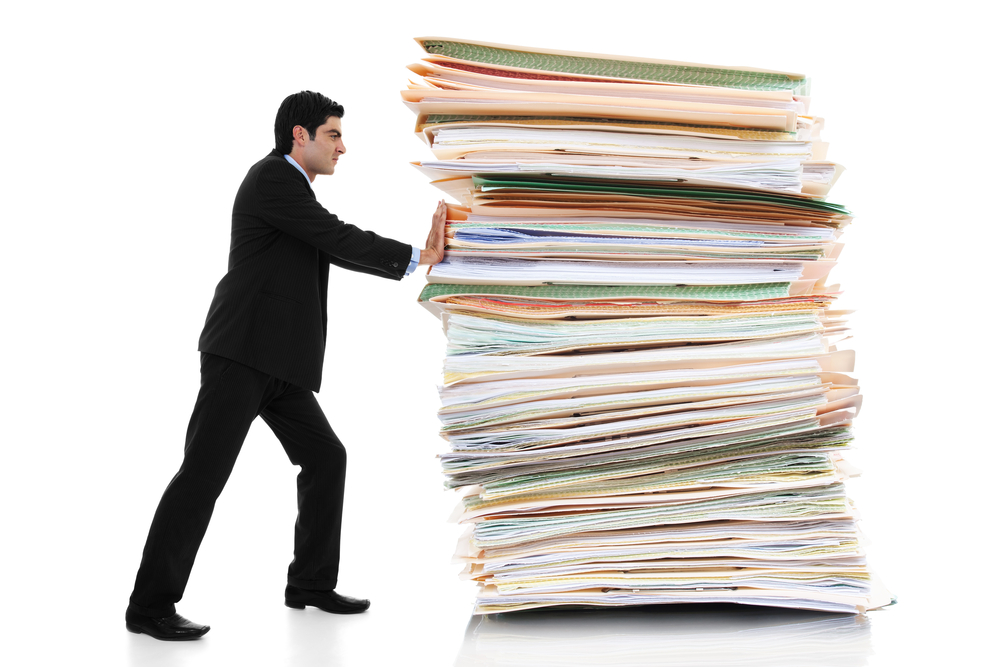
Ask distributed generation developers to list their pain points, and utility interconnection delays inevitably rank high.
Developers say utilities let applications pile up and make the process unnecessarily complex. Some suspect the delays are intentional — a way to tamp down the competition. Utilities counter that they’re overwhelmed by a big uptick in solar applications and developers and installers don’t always understand the complexity of interconnection review.
Interconnection delays heighten project risk. Permits may lapse, land options may expire, customers and investors may turn to other opportunities, and the project may collapse.
A dispute playing out now before the New Hampshire Department of Energy offers insight into the arguments and struggles over interconnection.
Three solar companies have filed a complaint against Public Service of New Hampshire over 28 distributed solar projects, totaling 160 MW, that they say are stalled in the utility’s interconnection queue, some going back to July 2022. Kearsarge Solar, ReWild Renewables and Lodestar Energy argue that the Eversource subsidiary costs them money, sacrifices community tax revenue and jobs, delays state renewable energy goals, and forfeits carbon reduction.
In their complaint, the developers quantify what a canceled project means to them: a lost revenue stream of $169,640/MW from net metering annually over 20 years along with potential earnings from renewable energy certificates and the residual value of projects at the end of their net metering term. This comes after they’ve paid the utility $75,000 to $200,000 for system impact studies.
What the utility says
Eversource admitted to accumulating a backlog of applications, a situation it said was born from a jump in solar installations in recent years.
The problem began about halfway through 2022 when interconnection applications grew by 2.7 times over the previous year, the utility said in a filing to the department. The boom continued into 2023 with 4,719 applications, compared with 1,513 applications two years earlier.
“The company was not equipped to handle an exponential increase, and a bottleneck of applications resulted,” the utility said in an April 22 filing to the department.
Eversource said it “redoubled its efforts” and now 90% of its New Hampshire applications are processed within three days. But 91 projects, sized at least 999 kW, remained in the queue. “These projects are inherently complex and so do not meet the criteria for the fast-track process which the company was able to implement for smaller projects,” Eversource said.
Is New Hampshire an anomaly?
That’s a hard question to answer because there is little easily accessed public data about interconnection delays on the US distribution grid — where distributed energy ties in. The information is difficult to collect because distribution lines are operated by more than 3,000 electric companies regulated by 50 different states and there is no central repository for reporting interconnection performance.
In contrast, interconnection delays for utility-scale power projects — which tie into the transmission grid — have been more easily revealed via information from the seven regional transmission organizations and 44 balancing authorities that manage that side of the grid. The Lawrence Berkeley National Lab has been tracking the years-long transmission interconnection bottleneck as part of its Queued Up project.
New map will reveal DER interconnection delays in the US
“There’s this need to make it more public — transparent to all parties, regulators, utilities, installers — and have it be in one place that just makes the conversation easier.”
Chris Collins, Ohm Analytics founder.
Now, delays on the distribution grid are about to become transparent too, thanks to a project being spearheaded by Solar United Neighbors, a national nonprofit with the mission of building a new energy system with rooftop solar at the cornerstone.
The Washington, DC.-based organization is creating a ‘heat map’ to reveal trouble spots throughout the United States where utility interconnection logjams exist on the distribution grid. The organization is working in partnership with Ohm Analytics, which is building a GIS interactive database that looks at both solar interconnection and permitting.
The heat map, available to the public free of charge, will use color coding to show where the bottlenecks exist.
In addition to the map, Solar United Neighbors plans to set up a complaint platform where consumers, installers and developers can report interconnection delays.
“Any company or individual that’s waiting on their interconnection, or it’s gone south, can file a complaint. We’ll take the complaints and do a data visualization of where they’re accumulating,” said Anya Schoolman, Solar United Neighbors founder and executive director, in a recent interview.
The organization plans to report complaints to state public utilities commissions. While details are still being worked out, the organization may file some complaints directly to shield those who wish to remain anonymous.
“Installers — the private sector companies — are afraid to complain generally because their livelihood depends on the granting of interconnection by the utility,” Schoolman said.
The organization wants to ensure that formal complaints make their way to the public utilities commissions so that they can become part of the information regulators weigh when considering utility rate increases
This approach could raise interconnection issues to a new level, Schoolman said. “The interconnection teams are down in the basement somewhere. But the people who work on rate cases are up in the C-suite,” she said.
None of this will be easy and Schoolman is seeking partners to help her team work on the project.. Public utility commission complaint systems are “different in every state and a lot of them make it really hard.” Some don’t accept email, some only accept faxes and still others require paper. Over the next few months, United Solar is setting up the platform.
Meanwhile, Ohm Analytics is diving deeply, state by state, city by city, utility by utility, into interconnection queues and permitting. Ohm Analytics calls it the Clean Code project — named so because it hopes to see the data used to improve building, interconnection and other codes important to the development of distributed clean energy. The analytics firm is now consolidating information for the heatmap.
“There’s this need to make it more public — transparent to all parties, regulators, utilities, installers — and have it be in one place that just makes the conversation easier,” said Chris Collins, Ohm Analytics founder.
See related story, An Energy Wonk Comes Face-to-Face with the Real World. It isn’t Pretty
He envisions the map also helping Solar United Neighbors in policy advocacy efforts. Before meeting with a city or state official, they can send a map of the pertinent jurisdiction so that officials are well aware of the issues.
Why do interconnection queues jam up?
Collins showed me some mapping the company has already done in parts of south Florida, which indicated quick turnarounds for interconnection applications submitted to large utilities, but long waits for some smaller electric companies.
“I think what it comes to is resources,” Collins said. He sees problems occurring in states where solar installations are suddenly on the rise. “When that happens, I think utilities get overloaded. And that’s where the pain comes.”
Sometimes the uptick is predictable. For example, an increase in utility rates drives more solar activity. That appears to be what happened in New Hampshire..
Other drivers are less predictable, he said. For example, teams of installers may suddenly focus on an area without forewarning to utilities.
Interconnection queues also can flood when states create new incentive programs or clean energy goals. Collins saw that happen with community solar in a Northeast state. “It was just flooded with applications. They had never dealt with anything like that. They came to us and said, ‘Do you have data on l how this normally works in other states? Because we’re getting hammered.’”
Making permitting quicker and easier

Obtaining project permits represents an additional source of delay for solar installations in some places. Solar United Neighbor and Ohm Analytics are working on documenting that, too, with a third partner, Permit Power, a newly launched research and advocacy organization that focuses on government policy.
Nicholas Josefowitz, co-founder of Permit Power, said that permitting issues are “a massive driver for why Americans have to pay so much more to power their lives with clean electricity than people do in other countries like Germany or Australia or Italy or England.”
About 1 in 10 rooftop solar customers pull out before installing panels. While their reasons vary, permitting delays appear to play a significant role, according to a survey by the National Renewable Energy Laboratory (NREL) and the Solar Energy Industries Association.
‘If you went on Amazon to buy a book and they said that they would deliver it sometime between four and 12 weeks from now, you probably wouldn’t see Amazon being one of the most valuable companies, and you wouldn’t see all the people buying the books,” Josefowitz said. “The good news is that it’s all within our control. We don’t need some major scientific breakthrough to achieve these cost savings. We just need to deploy better processes.”
Software already exists that allows for quick application and approval online. Launched five years ago by NREL, SolarAPP+ is available free of charge to permitting authorities for residential solar and storage.
“You put in the details, you press the green button, submit, and then the software will determine whether your system meets building code and will instantly issue you your permit if it does,” he said.
About 200 cities and counties in 12 states now use SolarAPP or another automated application process for residential solar and storage permits. Given that cities and counties number in the tens of thousands, there is still a long way to go. Intertia and lack of awareness seem to be the stumbling blocks — something the team hopes to change.
Josefowitz also wants to expand automated permitting to other energy resources besides solar and storage, such as EV chargers and heat pumps. And he says attention needs to be paid to homeowners associations that can also significantly delay solar and storage installations.
“There are over 350,000 homeowners associations around the country. Over 70 million Americans live in homeowners associations. Too often, even the ones that are well-meaning will say, sure, we allow solar on people’s roofs. Why don’t you submit an application and our next board meeting is in October,” Josefowitz said. “We’re not going to make it cheap and easy for Americans to power their lives of clean electricity if they have to wait for the next board meeting in October.”
DER interconnection and permitting will probably never be as easy as an Amazon delivery. But DER developers and installers who are struggling with long delays should keep an eye on the work of these three organizations. Maybe things are about to change.
Subscribe to the free Energy Changemakers Newsletter.
